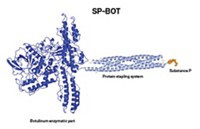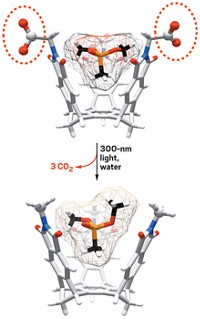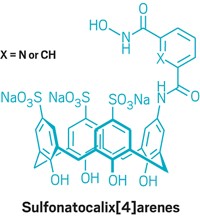Advertisement
Grab your lab coat. Let's get started
Welcome!
Welcome!
Create an account below to get 6 C&EN articles per month, receive newsletters and more - all free.
It seems this is your first time logging in online. Please enter the following information to continue.
As an ACS member you automatically get access to this site. All we need is few more details to create your reading experience.
Not you? Sign in with a different account.
Not you? Sign in with a different account.
ERROR 1
ERROR 1
ERROR 2
ERROR 2
ERROR 2
ERROR 2
ERROR 2
Password and Confirm password must match.
If you have an ACS member number, please enter it here so we can link this account to your membership. (optional)
ERROR 2
ACS values your privacy. By submitting your information, you are gaining access to C&EN and subscribing to our weekly newsletter. We use the information you provide to make your reading experience better, and we will never sell your data to third party members.
Environment
Molecules To Protect The Brain From Nerve Gas
Medicinal Chemistry: Family of small molecules can enter the brain and counteract organophosphate poisons
by Aaron A. Rowe
January 6, 2012

A new family of oxime compounds can cross the blood-brain barrier in mice and protect the animals from nerve gas poisoning (J. Med. Chem., DOI: 10.1021/jm201364d). The researchers who developed them hope the molecules could serve as antidotes for exposure to the gases or certain pesticides.

Nerve gases such as sarin and pesticides such as chlorpyrifos are organophosphate molecules that wreak havoc on the nervous system by gumming up a pair of enzymes called cholinesterases. With the enzymes out of commission, the neurotransmitter acetylcholine builds up around nerve cells, leading to vomiting, seizures, respiratory failure, and sometimes death.
One of the most common antidotes for nerve gas exposure is pralidoxime. (Soldiers carry syringes filled with the compound in case of a chemical weapons attack.) It reactivates cholinesterases when the molecule’s oxime group breaks the bond formed between the organophosphate and the enzyme.
But pralidoxime has a problem: It contains a positively charged quaternary amine, which prevents it from slipping through the blood-brain barrier. So although pralidoxime can undo paralysis in respiratory tissue, it can’t alleviate problems within the central nervous system.
To overcome this problem, John Cashman and his team at the Human BioMolecular Research Institute, a nonprofit organization in San Diego, designed a set of oximes that replace the quaternary amine with an amidine. This group can be neutral in charge, allowing the molecule to pass into the brain.
In a test of the new molecules’ efficacies, several of them protected mice from a lethal dose of a sarin mimic when researchers injected the compounds into the animals. None of the treated mice succumbed to the poison, but half of the mice that received no treatment died. The researchers found high levels of the amidine-oximes in the treated animals’ brains.
Next Cashman and his colleagues want to test their compounds to see if they can protect the brain from pesticide poisoning.





Join the conversation
Contact the reporter
Submit a Letter to the Editor for publication
Engage with us on Twitter